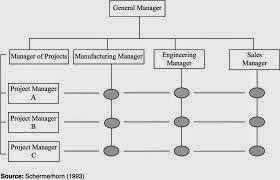8 STEPS FOR DECISION MAKING PROCESS
The word decision
has been derived from the Latin word "decidere" which means
"cutting
Off".
Thus, decision involves cutting off of alternatives between those that are
desirable and those that are not desirable. Decision is a kind of choice of a
desirable alternative. A few definitions of decision making are given below:
In
the words of George R. Terry, "Decision-making is the selection based on
somecriteria from two or more possible alternatives".
Steps of Decision Making Process:
Following are the important steps of the decision making
process. Each step may be supported by different tools and techniques.
Step 1: Identification of the purpose of the decision:
In this step, the problem is thoroughly analysed. There are
a couple of questions one should ask when it comes to identifying the purpose
of the decision.
·
What exactly is the
problem?
·
Why the problem should
be solved?
·
Who are the affected
parties of the problem?
·
Does the problem have
a deadline or a specific time-line?
Step 2: Information gathering:
A problem of an organization will have many stakeholders.
In addition, there can be dozens of factors involved and affected by the
problem.
In the process of solving the problem, you will have to
gather as much as information related to the factors and stakeholders involved
in the problem. For the process of information gathering, tools such as 'Check
Sheets' can be effectively used.
Step 3: Principles for judging the alternatives:
In this step, the baseline criteria for judging the
alternatives should be set up. When it comes to defining the criteria,
organizational goals as well as the corporate culture should be taken into
consideration.
As an example, profit is one of the main concerns in every
decision making process. Companies usually do not make decisions that reduce
profits, unless it is an exceptional case. Likewise, baseline principles should
be identified related to the problem in hand.
Step 4: Brainstorm and analyse the different choices:
For this step, brainstorming to list down all the ideas is
the best option. Before the idea generation step, it is vital to understand the
causes of the problem and prioritization of causes.
For this, you can make use of Cause-and-Effect diagrams and
Pareto Chart tool. Cause-and-Effect diagram helps you to identify all possible
causes of the problem and Pareto chart helps you to prioritize and identify the
causes with highest effect.
Then, you can move on generating all possible solutions
(alternatives) for the problem in hand.
Step 5: Evaluation of alternatives:
Use your judgment principles and decision-making criteria
to evaluate each alternative. In this step, experience and effectiveness of the
judgement principles come into play. You need to compare each alternative for
their positives and negatives.
Step 6: Select the best alternative:
Once you go through from Step 1 to Step 5, this step is
easy. In addition, the selection of the best alternative is an informed
decision since you have already followed a methodology to derive and select the
best alternative.
Step 7: Execute the decision:
Convert your decision into a plan or a sequence of
activities. Execute your plan by yourself or with the help of subordinates.
Step 8: Evaluate the results:
Evaluate the outcome of your decision. See whether there is
anything you should learn and then correct in future decision making. This is
one of the best practices that will improve your decision-making skills.
Hence ,when it comes to making decisions, one should always
weigh the positive and negative business consequences and should favor the
positive outcomes. This avoids the possible losses to the organization and
keeps the company running
with a sustained growth. Sometimes, avoiding decision making seems easier;
especially, when you get into a lot of confrontation after making the tough
decision. But, making the decisions and accepting its consequences is the only
way to stay in control of your corporate life and time.



Comments